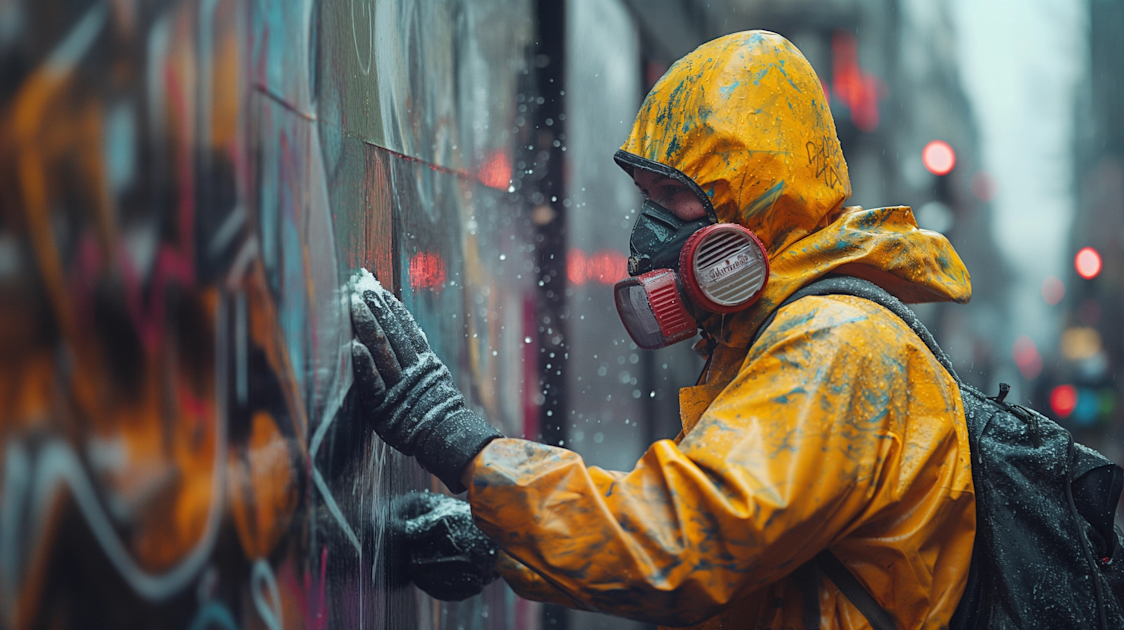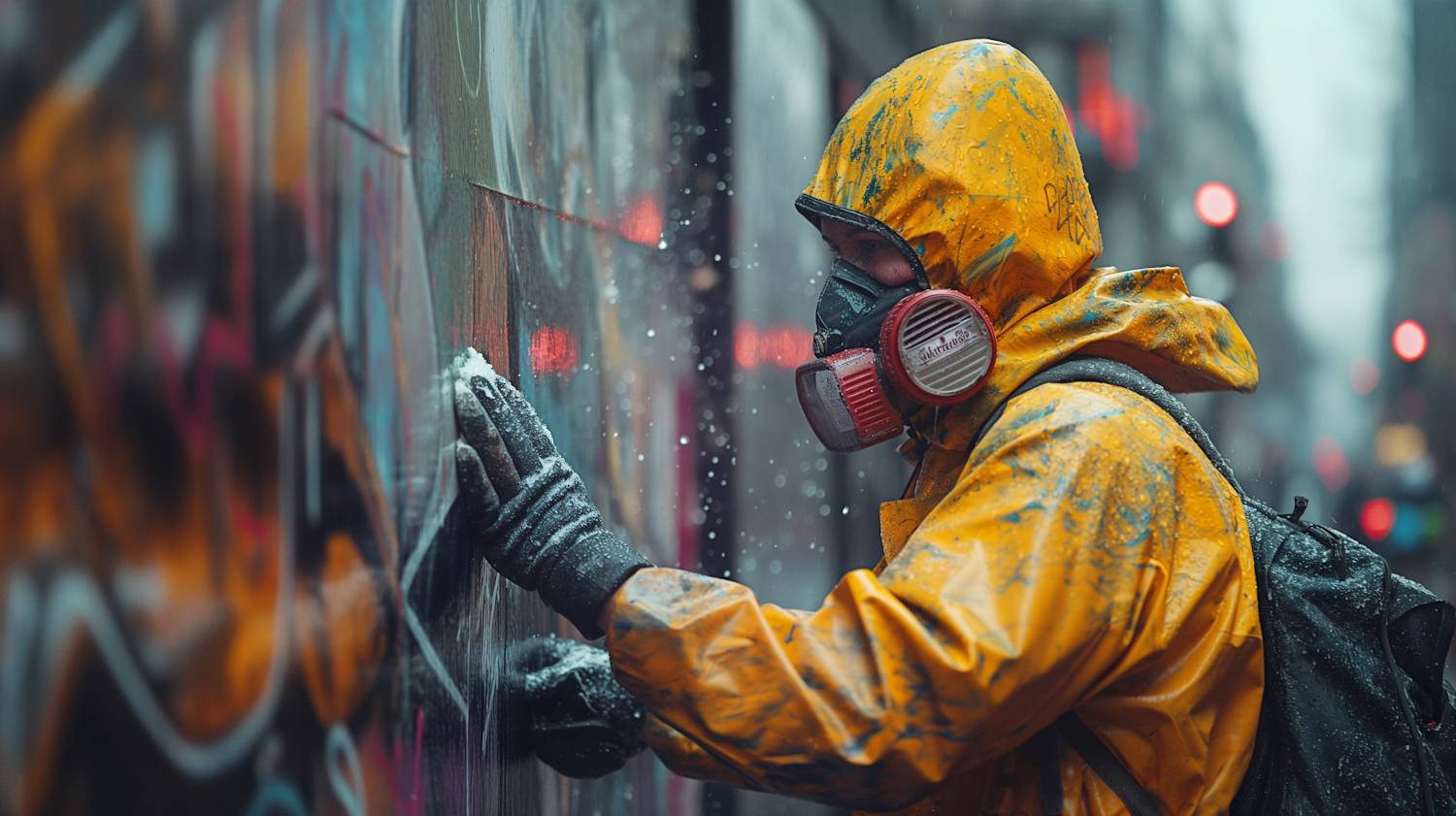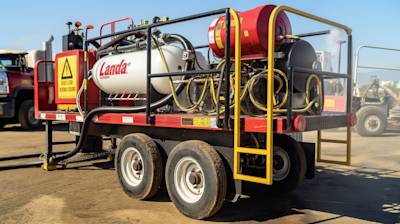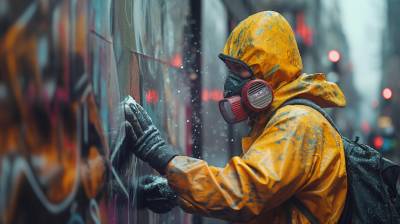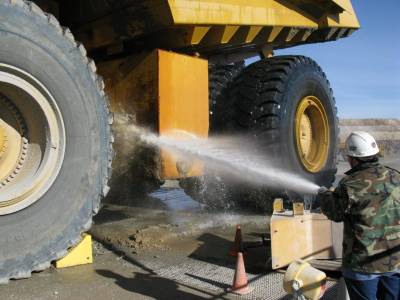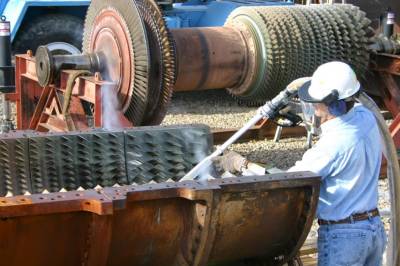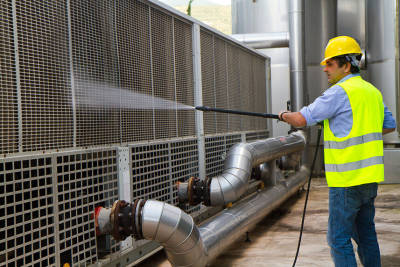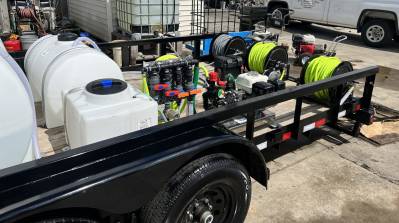Graffiti, an urban art form that blankets city walls, bridges and buildings, is often viewed as an eyesore, especially when it’s unwanted or inappropriate. The aftermath of graffiti— the stained, tarnished walls— begs for immediate attention, in order to restore the aesthetic appeal of the grazed surfaces. This is where graffiti removal comes into the picture. With a booming industry centered around privy professionals and specialized tools and techniques, graffiti removal has become a necessary service in today’s urban landscapes. Let's delve deeper and find out more about the process, the tools, and the techniques involved in effective graffiti removal.
The Basics of Graffiti Removal
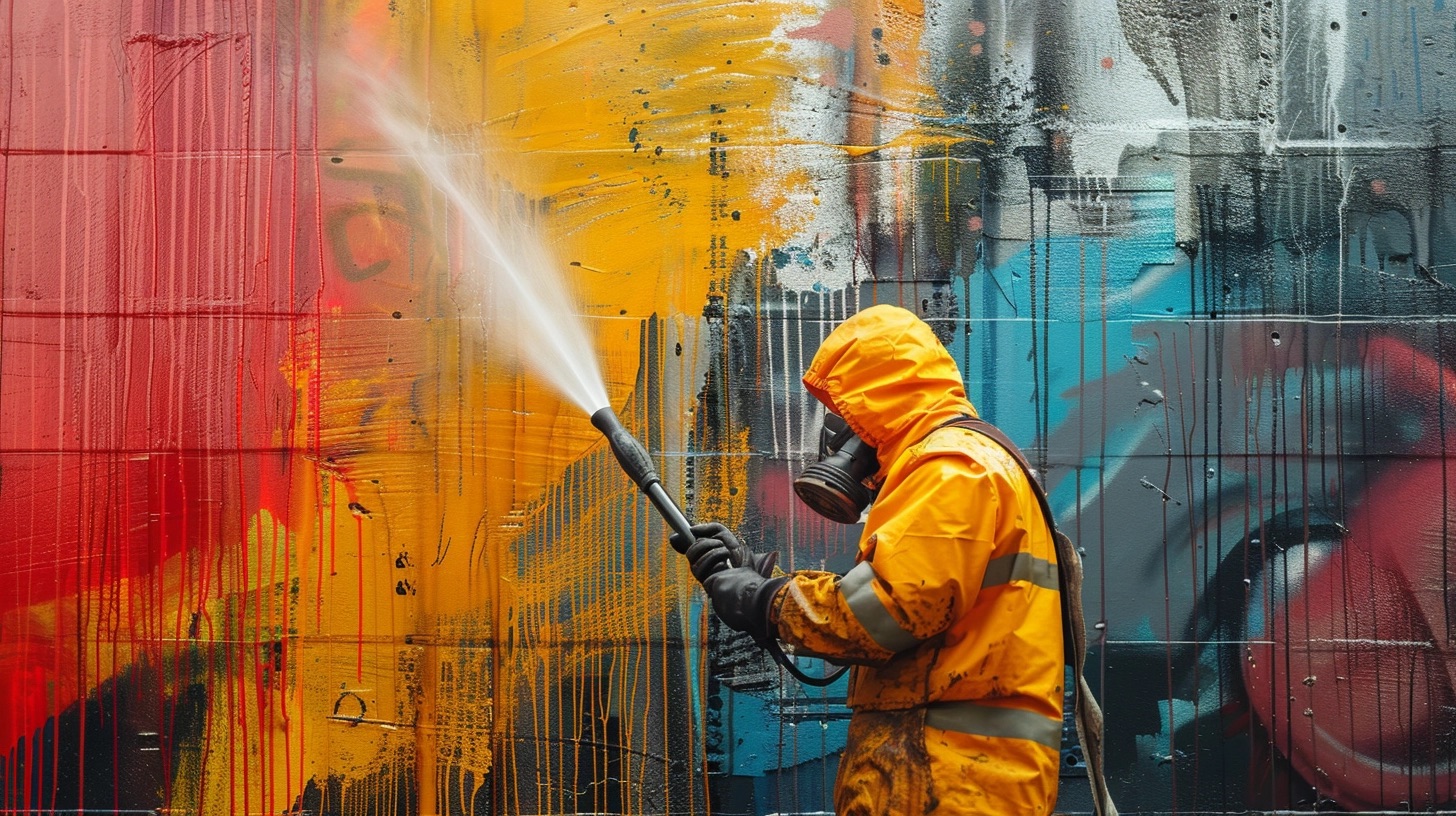
At its core, graffiti removal is the process of cleaning walls, buildings, and other surfaces that have been painted or marked without permission. The process involves understanding the type of surface, type of graffiti (spray paint, permanent markers, etc.), and then selecting the right removal technique and tools to prevent further damage.
Types of Surfaces and their Impact on Graffiti Removal
Surfaces can be porous like brick and concrete or non-porous like metal and glass. Each type requires a different approach for graffiti removal. Typically, non-porous surfaces are easier to clean as the paint doesn't seep into the material. Porous surfaces pose a bigger challenge because the paint seeps deeper, necessitating stronger removal techniques.
-
Non-Porous Surfaces: Metal, glass, and plastic surfaces can be cleaned using mild solvents and simple graffiti removal tools.
-
Porous Surfaces: Concrete, brick, and wood surfaces usually require stronger solvents and may even need pressure washing or sandblasting to remove graffiti completely.
A Look at the Different Techniques of Graffiti Removal

Generally, graffiti removal involves three principal techniques— chemical removers, paint over, and blasting methods. Each technique has its strengths and is used based on the requirements of the specific job.
Chemical Removers
Chemical removers work by breaking down the paint which can then be washed off. They're effective but also potentially harmful if not used correctly. These chemical removers are most effective on non-porous surfaces.
Paint Over
For some surfaces, the best option is to simply paint over the graffiti. This method is often cheaper and quicker, but finding the exact match of the original paint can be challenging. Multiple coats are usually needed to completely cover the graffiti.
Blasting Methods
Blasting techniques, like sandblasting or soda blasting, are effective for porous surfaces. They work by forcefully etching away the surface layer, removing the paint in the process. This method can be time-consuming and may slightly damage the primary surface.
The Tools of the Trade
Tools for graffiti removal range from simple brushes and rollers to more complex machinery. Some of the most commonly used tools include:
- Pressure washers
- Sand or soda blasters
- Paint Sprayers
- Chemical sprays and solvents
- Safety gear- gloves, goggles, and respirators
Graffiti Removal Safety Precautions
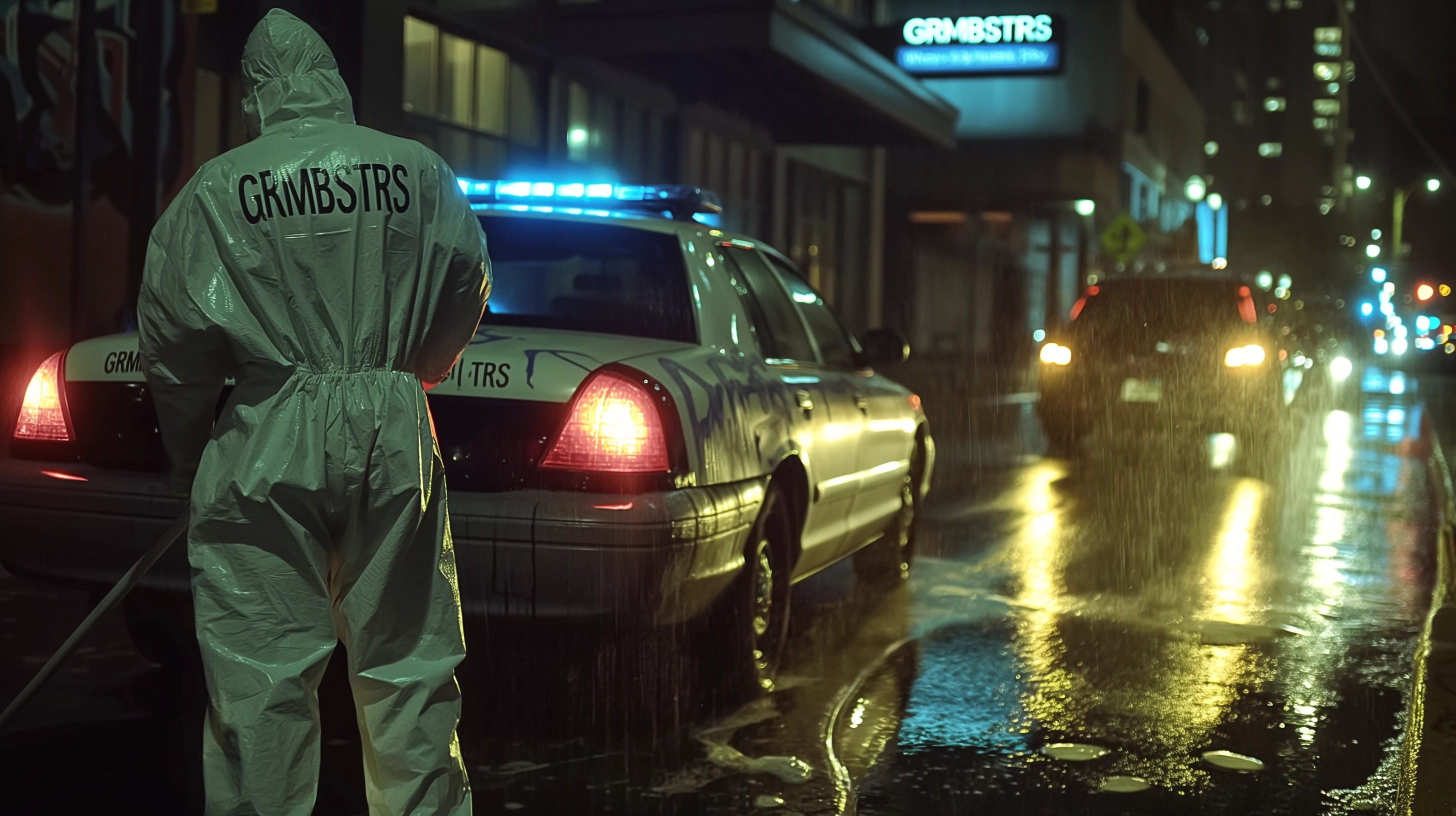
While graffiti removal is necessary, it's also important to ensure the safety of the individuals involved in the process. This includes wearing proper safety gear like gloves, goggles, and respirators when working with different chemicals or machinery. It's also crucial to prevent possible damage to surrounding property or vegetation when using techniques like pressure washing or chemical application.
Professional Graffiti Removal Services
With the variety of surfaces and the complexities involved in graffiti removal, it's often best to hire professionals. Experienced professionals will understand the intricacies of the job, have the right tools and equipment, and know how to handle different removal situations effectively. Plus, they will prioritize safety while ensuring the best results, saving time, money and avoiding the risk of further damaging the surfaces.
The Future of Graffiti Removal
With advancements in technology, the graffiti removal industry is set to evolve. For instance, new environmentally friendly graffiti removal products are being developed. These aim to reduce the environmental impact and possible health hazards associated with traditional removal methods. Furthermore, technologies such as laser graffiti removal are also being explored, promising a future where graffiti removal may become more effective and efficient.
In a world where graffiti is a persisting occurrence, understanding the ins and outs of graffiti removal is indispensable. With the right tools and techniques, alongside professional services, restoring your walls and surfaces back to their pristine condition is entirely possible.
Frequently Asked Questions About Graffiti Removal
What Obligations Do Property Owners Have for Graffiti Removal?
All property owners have a responsibility to maintain the aesthetics of their building and public spaces. This includes the removal of unsightly graffiti that may devalue the property or contribute to neighborhood blight. Depending on local laws and regulations, property owners may be required to promptly remove graffiti from their premises. It's always best to check your local regulations.
What Types of Surfaces Can Graffiti Removal Be Performed On?
Graffiti removal can be performed on a wide array of surfaces that include, but are not limited to, brick, concrete, glass, metal, wood, and painted surfaces. The removal process varies depending on the surface type and the materials used in the graffiti art.
Is Professional Graffiti Removal Always Necessary?
While you can attempt to clean it yourself using home-grown solutions, professional graffiti removal often provides the best results. Professionals have access to specialized tools and products, along with the expertise necessary to remove graffiti without damaging the underlying surface. However, for very minor graffiti, a DIY approach may be possible.
What is the General Process for Removing Graffiti?
The exact process varies based on the surface and the type of graffiti. Initially, the area is cleaned of any grime or dirt. Then, a graffiti remover suitable for the material is applied. After it has set for a specific time, the area is then washed with a pressure washer or rinsed thoroughly. In stubborn cases, this process is repeated until the graffiti is fully removed.
Does Graffiti Removal Leave Any Damage or Residue?
If not properly done, graffiti removal could potentially harm the underlying surface or leave unwanted residues. Professionals are adept at mitigating these problems by finding the right balance between powerful graffiti removers and the preservation of the underlying surface.
What Measures Can I Take to Prevent Graffiti?
While it's impossible to fully prevent graffiti, several measures can be taken to discourage it. Installing security lights, surveillance cameras, or protective coatings on the surfaces can deter potential vandals. Anti-graffiti community programs and initiatives can also be effective.
What are the Benefits of Hiring Professional Graffiti Removal Services?
Professional graffiti removal services offer numerous advantages. They come equipped with professional-grade tools and sophisticated solutions made specifically for graffiti removal. They are experienced in handling all types of surfaces and graffiti materials, reducing the risk of property damage. Most importantly, they save you time and effort.
Are There Eco-friendly Options for Graffiti Removal?
Absolutely, Yes! Many companies have begun to offer eco-friendly graffiti removal options. These are typically less harmful to the environment and can also be safer for the operator and building occupants. Always ask for eco-friendly options if that's important to you.
Is Graffiti Removal Covered By Insurance?
It depends on the insurance policy. Some commercial property insurance policies may cover graffiti removal under vandalism coverage, while others may not. Always consult with your insurance provider to determine what is and isn't covered by your policy.
What Should I Do If I See Graffiti on Public Property?
If you notice graffiti on public property like parks, roads, or government buildings, it's best to report it to the local authorities. Most cities have specific departments or hotlines to deal with these issues.
Pros of Graffiti Removal
Improvement of Aesthetic Environment
The most noticeable advantage of eliminating graffiti is the aesthetic upgrade. Graffiti, while sometimes considered art, can often be unsightly and create a perception of neglect particularly in public spaces. When graffiti is removed:
- Buildings and infrastructures appear cleaner and more attractive
- Public spaces become more pleasant for residents and visitors
- Property values may increase due to enhanced visual appeal.
Crime Deterrence
There is a concept known as "broken window theory" which suggests that visible signs of disorder and neglect (like graffiti) can encourage further crime and anti-social behavior. Here, graffiti removal may help to:
- Deter petty crimes such as vandalism
- Discourage gang activities, as graffiti often marks gang territories
- Reduce anti-social behaviors, promoting a safer community.
Economic Benefits
Effective graffiti removal strategies can also have tangible economic benefits:
- Increased property values result in higher property taxes, which can be reinvested into urban development projects
- Attractiveness of the neighborhood encourages business activities and tourism, contributing to local economy.
Cons of Graffiti Removal
High Costs
Graffiti removal comes with a price tag. It requires resources, manpower and sometimes specialized equipment.
- Cost of paint or other cleaning materials
- Cost of hiring professional graffiti removal services
- Recurrent expenses if an area is frequently targeted. The ongoing cost of materials, labor, and time for repeated cleanups can mount over time.
Damage to Surfaces
There can be potential negatives to graffiti removal, including damage to the surfaces being cleaned. This might be:
- Damage from abrasive cleaning methods, removing not just the graffiti but also layers of the original surface
- Uneven discoloration or texture after cleanup
- Expensive restorations if the graffiti is on historic structures.
Threat to Street Art Culture
In some cultures, graffiti is considered a form of street art. In these cases, removing graffiti can be perceived as:
- Destroying local culture and art community
- Suppressing freedom of expression
- Harboring negative sentiments from artists and art lovers.
Legal and Ethical Implications
Sometimes, the legality and ethics surrounding graffiti removal can become hazy. For instance:
- If a graffiti artist has the property owner's permission, the city or a third-party would have to navigate legal constraints before removal
- If the graffiti is done by a famous artist and could be considered a valuable artwork, removing it could raise ethical concerns.
Overall, the pros and cons of graffiti removal are numerous and complex, requiring careful consideration from homeowners, communities, and governments alike.
Summary
Graffiti removal is no easy task. It takes special tools and detergents, and even then, the process might not totally erase the paint. It's tricky work, often done by professionals, but it can be a powerful action that reclaims spaces in communities. The sight of a clean, well-maintained building can inspire pride in a neighborhood and show that the locals won't tolerate any form of vandalism.
While there is a fine line between art and defacing public property, it's crucial to have measures like graffiti removal in place to address concerns of both legality and aesthetics. Public places and properties should promote common respect and community love. And it's crucial that those with the power to remove graffiti do so in a way that respects the whole community and helps keep places looking their best.
Graffiti removal has a significant role in maintaining the cleanliness and appearance of our communities. When done correctly, it can make a huge difference in the overall wellness and safety of a place. As such, it’s important to invest in and support graffiti removal initiatives, keeping our spaces clean, respected, and appreciated by everyone. It's a necessary task that requires attention, time, and resources, but ultimately, it’s worth it for the betterment of our shared spaces.
About Grime Busters Pressure Washing
Meet Grime Busters Pressure Washing, the go-to cleaning powerhouse based in Vancouver, WA. Established by a group of dedicated locals who love clean and shiny surfaces, we're experts at making dirt disappear. Using proprietary techniques and years of experience, we've made a name for ourselves by delivering outstanding results to both residential and commercial clients. We get a kick out of watching grime vanish from decks, driveways, and exteriors - bringing a fresh new look to your property. Beyond pressure washing, we are committed to customer satisfaction - always going that extra mile to ensure you're left grinning ear-to-ear. Don't just take our word for it, experience the magic of Grime Busters Pressure Washing today!
Tags: graffiti removal, cleaning tips, property maintenance,

